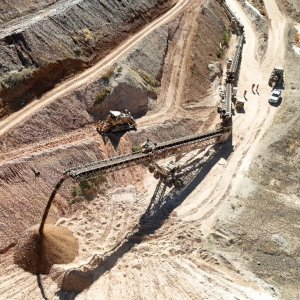
The Year in Review
A GLIMPSE INTO THE INDUSTRY
On September 9, Mexico’s new Minister of Finance and Public Credit (SHCP) announced budget cuts that would slash infrastructure investment significantly. SHCP submitted a MX$539.7 billion (US$28.4 billion) budget proposal for 2017 (PPEF17) to ensure the country’s economic stability, creating a 27.2 percent deficit from 2016. Public works will be cut by 27 percent in real value from 2016 and SCT’s budget will again be reduced by 29.6 percent.
But not everything is doom and gloom. BMI Research expects these budgets cuts will incentivize the public sector to push for more private investment to make up for the lack of funds and therefore the construction industry should show steady growth. According to Timetric, the Mexican construction market reached MX$961 billion (US$50.5 billion) in 2015, up from MX$766.7 billion (US$40.4 billion) in 2010 and it will rise to MX$1.2 trillion (US$63.2 billion) by 2020 in nominal value terms.
Mexico is at a turning point. President Peña Nieto’s administration has been keen on incentivizing foreign direct investment (FDI) in 28 strategic sectors. In the last three years the automotive industry alone has attracted US$27 billion, according to Ildefonso Guajardo, Minister of Economy. But to maintain these levels of incoming cash and growth Mexico’s infrastructure has to keep up. Logistically the country is well positioned as it has one of the world’s major consumers to its north alongside a strategic Free Trade Agreement and it can also access all the benefits of having the Panama Canal as its neighbor to bring global trade. But according to the Wharton School, if Mexico does not pair up its manufacturing capacities with strong transportation links it may limit the country’s capacity to become an industrialized economy.
Social infrastructure, housing, urban development and commercial real estate are also important pillars for the country’s economic future. As such, innovative financing tools have been developed to allow new types of fundraising and better options for long-term institutional investors looking to mitigate risk. CKD’s, CerPIs, Fibras and Fibras E are all redefining infrastructure investment in Mexico and allowing new players to come in under a new set of rules. Innovation is the name of the game.
However, in the 2015-2016 Global Competitiveness Rankings, Mexico still ranks 57 out of 138 in infrastructure competitiveness. Though that is up eight positions from 2014-15, Mexico still lags behind Chile, Trinidad and Tobago and Poland.


THE CHALLENGES
The main problems the industry faces are the lack of longterm planning, lack of viable projects and, pertaining to construction, challenges in acquiring rights of way and working with ejidos continues to stunt the progress of the NIP. According to Cesar Monroy, Director of Infrastructure at PwC, “The problem is that there are no projects to invest in. There is enough money to reach the percentages of investment established by the NIP but a valuable project portfolio is needed. These financial institutions encounter immense quantities of projects that are poorly structured and planned, therefore diminishing their desire to invest in infrastructure. The infrastructure sector’s Achilles’ heel is right of way issues, which have inhibited investment across the entire country.” Mexico’s debt continues to increase and macroeconomic factors are delaying the completion of various nascent projects. The country continues to grow exponentially, urban areas are becoming congested and the construction of infrastructure is necessary to ensure the entire population has access to energy and water resources. The country is filled with countless investment opportunities and although reforms have slowed down, the industry is waiting anxiously to bridge the gap.
To encourage the private sector to participate more in the development of the country’s backbone, the government has created various incentives and financial mechanisms. The four financial instruments the entire industry is discussing are the Fibra, Fibra E, CKD and CerPI. The first CerPI and Fibra E were launched in late2015 and the private sector will be able to use them for the construction of energy, road, transportation and other types of infrastructure the country desperately needs. These asset classes allow AFORES to invest in long-term infrastructure projects, alongside the private sector, and help the government construct the remaining projects of the NIP. These can also be used for the construction of real estate assets. Fibras are dominating the commercial and industrial real estate sectors, creating portfolios of thousands of square meters of office space.
Originally the 2014 NIP called for US$597 billion worth of infrastructure investment with 37 percent of fund allocation coming from the private sector. However, new budget constraints will accrue a larger percentage. Though Mexico has a strong PPP law there is still a lack of regulation and transparency issues have permeated the industry, which will have to be improved or there will be a risk of scaring away the private sector.
THE MAIN PROJECTS OF THE NIP
2016 is an important year for reducing Mexico City’s infrastructure gap. The New Mexico City International Airport (NAICM) is the most important project of the past decades and given its importance, companies are awaiting the chance to take part in one of the 21 tender packages. To ensure the connectivity of this project, the government launched various transportation projects. The Toluca-Mexico Interurban train is under construction and it will aim to reduce congestion from Toluca through Santa Fe to the Observatorio Terminal near Reforma. Various improvements and the construction of new roads around the Valley of Mexico Metropolitan Area (ZMVM) will be completed by 2016. Mexico’s port infrastructure is undergoing serious modifications to support larger capacities and meet the demand of its growing manufacturing and automotive industries. To meet the goal of creating a world-class platform, Mexico’s borders are being optimized to facilitate the export and import of goods, as well as the flow of tourism. Guadalajara and Monterrey are also adapting their infrastructure to create the country’s largest urban areas. The construction of the Guadalajara light train will increase the efficiency of the city’s transportation system.
ROAD AND RAIL
Many road and rail projects were deeply impacted by the various budget cuts. The results were long delays or demands for the private sector to assume more risk. This year’s largest rail projects are the Toluca-Mexico interurban train and Line 3 of the Guadalajara light train.
Investment in the Toluca-Mexico interurban train is estimated to reach MX$44 billion (US2.3 billion) and as of September 2016 its construction has advanced 37 percent. This 57km project is designed to relieve Toluca’s traffic in a 40-minute commute that would cost citizens MX$12 (US$0.63). The Guadalajara light train will link Jalisco’s major cities of Zapopan, Guadalajara and Tlaquepque with a 22km line of 18 stations. As of 2Q16, the train is 45 percent completed and it is expected to be 80 percent complete by the end of the year. This project will demand more than MX$20 billion (US$1.05 billion) for its construction.
According to SCT, in terms of value, 81 percent of national production travels through highways and freeways. In 1Q16, six highways with a total length of 1,600km were constructed. During this administration, 26 highways have been constructed or expanded so far. The majority of these projects were carried out under PPP schemes and represented a total investment of more than MX$90 billion (US$4.7 billion). SCT is expected to complete eight more projects by the end of 2016 to build a total of 34 highways and its goal is to complete 52 highways by 2018.
The projects completed this year include the La MarquesaToluca highway, the expansion of the Mexico City-Puebla Highway, the completion of the Reynosa Bypass, the macro-bypass for the Mexico City-Guadalajara Junction with Chapala, the Felipe Carrillo Bypass and first phase of the Don-Nogales Station.
As for freeways financed by the public sector, the goal is to complete construction on 80 projects and modernizations. Through 2Q16, four freeways were completed giving the country a total of 57 and for the remainder of 2016, seven more freeways will be completed. These projects will require an investment of MX$43 billion (US$2.2 billion) and will stretch 2,700km.
According to PwC, companies are opting to avoid greenfield road tenders in general due to the high risk they must assume. Given a lack of daily average traffic expectations in new projects, availability payment tenders tend to grab the attention of the private sector since risk is mitigated by ensuring constant income flow from public sector coffers to its private sector partner. “At the moment, the private sector is suffering due to a lack of options and it is a reflection on the number of participants in the few road tenders in the market. The most attractive projects are the availability payment projects. These types of projects many not have the highest yields, but they are the most secure since the payment comes from the federal government over a period of 15-20 years,” says Monroy.
PORTS AND AIRPORTS
As Mexico’s international trade continues to grow, Mexico is trying to accelerate the development of its two superports, the Port of Veracruz and the Port of Lazaro Cardenas, to keep up with additional demand. The NIP’s goal was to turn Mexico into a world-class logistics platform and these ports would optimize its connectivity with the global economy. SCT’s goal was to reach the installed operational capacity of 500 million tons by 2018. The construction of TEC II by APM Terminals in Lazaro Cardenas will be completed in September 2016 and immediately afterward the Specialized Automotive Terminal (TEA) is expected to be inaugurated. With these changes, Lazaro Cardenas would have an annual capacity of 47 million tons. The new Port of Veracruz is beginning expansion and as of 1Q16, 15 percent of the project was completed and the breakwaters are 48 percent complete.
The bidding and construction was launched for the 21 main packages of the project of the century, the NAICM. The airport has been divided into three different construction phases. As of September 2016, the preliminary projects and the terminal building, which is part of the second stage of phase one, have all been tendered. The security fence has been constructed, 48km of internal paths are established and the terrain has been cleaned and leveled.
URBAN DEVELOPMENT
In the last 50 years, Mexico has urbanized faster than the majority of the OECD countries. Just in the last decade it had the third largest expansion rate of the OECD. According to INEGI’s 2015 Intercensus Survey, Mexico’s population growth rate decreased for the first time in 45 years. From 2010 to 2015, the average growth rate was 1.4 percent. The states with the most people are Mexico City, the State of Mexico and Veracruz, representing 28 percent of the total population, which equates to 33 million people. According to SEDATU, eight of every 10 Mexicans live in a city and more than 60 percent of the population lives in 59 metropolitan areas.
Mexico City has grown to a point where it has merged with the State of Mexico and is now referred to as the ZMVM. The OECD recognizes the ZMVM as the largest urban agglomeration in the world. Not only is it the most populated area in the entire country with over 25 million people but it also has an immense infrastructure gap, high delinquency rates and a large housing deficit. In an OECD study on urban productivity and its relationship with urban governance, ZMVM’s productivity was equivalent to that of smaller cities such as Guadalajara and Puebla, and much lower than Leon and Monterrey even though its population is much larger.
The study suggests that not only is this due to the socioeconomic environment but also because of the considerable political divisions across the area, creating conflict between regulatory frameworks. Another reason why Mexico’s urban sprawl has not been properly contained is that the government has not renewed the General Human Settlements Law since May 1976. SEDATU is in the process of creating a new law to take its place, which integrates federal, state and municipal planning to create consistent growth across the country.
The National Urban Development Plan 2014-2018 (NUDP) focuses on the containment of growth, encouraging compact and vertical expansion throughout the country. According to Harvard, the goal is to promote smart growth while preserving open space and enhancing public areas. The government also plans greenfield developments and densification policies. The OECD suggests this plan needs to be longer than the presidential term and that professionalization of the public sector is a critical to improve urban planning capacity. Urban development projects were often improvised and conducted through trial and error in response to the priorities of the shortterm national plans.
The creation of SEDATU was a positive step to increasing collaboration between government institutions, as well as cohesion between urban development plans. Nevertheless there is still a great amount of fragmentation that remains. The OECD suggests that SEDATU should consolidate as a decision-maker on a national level and authorities could strengthen urban development through better sectoral planning, develop institutional networks to achieve agreements or create a national council that would coordinate the development of the country.
SOCIAL INFRASTRUCTURE
Mexico must drastically improve its social infrastructure, such as schools and hospitals. The latter proposed by the NIP have been the most successful projects. The health sector has been attracting multiple investors, such as Macquarie, and even the energy construction company Arendal. Puebla is among the states with the most investment in the improvement and construction of new health infrastructure. As of February 2015, the state had invested more than MX$8 billion (US$421 million) in the previous four years to construct a children’s hospital, two new general hospitals, 37 health centers and 49 smaller medical units.
The government also launched the Education Infrastructure Certificates (CIEN), which are Multiple Contributions Funds (FAM), that are issued through a financing vehicle to improve the infrastructure of more than 32,000 schools. Fitch Ratings has assigned the highest rating to the program and the government is optimistic it will drastically impact the country’s educational infrastructure. According to INEE, very few schools are equipped with necessary learning spaces, such as computer rooms, libraries, staff rooms and gyms. The organization also discovered that 55 percent of primary schools do not have adequate administration or common areas such as storage spaces, green areas or bathrooms. Only 50 percent of primary schools have reputable infrastructure. There are many schools that have all the infrastructure necessary but they still suffer from the Syndrome del Edificio Enfermo, or the Sick Building Syndrome, which means they are extremely sensitive to variations in lighting, temperature and other environmental factors.
HOUSING
Ensuring dignified housing for more than 119 million people is one of the largest challenges the government must resolve. The 2013 housing crisis that undermined the country’s social housing market was a response to the government’s changes to the National Housing Plan.
The National Housing Plan was introduced in 2013 and was led by SEDATU and CONAVI to ensure that the country’s deficit, which impacts 8.9 million families, is drastically reduced. It was accompanied by new housing policies that provided more attractive credits and subsidies to the improvement and expansion of housing, both in rural and urban settings. The construction industry is now regaining its stance. According to BBVA, more than 60 percent of the construction sector’s GDP comes from those buildings and the housing balance seems to be more stable in terms of the number of homes built. According to SHF and CONAVI, loans given for the construction of housing increased by 34.1 percent, to MX$10.6 billion (US$557 million) from MX$7.9 billion (US$415 million) in the year to March 2015. The GDP of the housing industry reached MX$935.2 billion (US$49.2 billion) in July 2016, representing 5.7 percent of the country’s GDP. CONAVI says the middle and residential housing sectors have the largest growth opportunities.
According to the Unique Housing Registry (RUV) the states with the highest number of housing developments were Nuevo Leon, Jalisco, Hidalgo, Guanajuato, Quintana Roo and the State of Mexico. According to SHF, the most expensive homes were located in San Pedro Garza Garcia in the Monterrey metropolitan area, Guadalajara and Acapulco, due to its proximity to Mexico City. Zapopan, Guadalajara has become the preferred location for medium to premium developments with a growth of 19.8 percent from 2000 to 2010. The leading cities in rentals are San Pedro Garza Garcia, followed by Puebla, Metepec and Valle del Bravo.
COMMERCIAL
The Association of Real Estate Developers (ADI) foresees investment of US$21 million in 2018 from its members alone. The cities that are experiencing the most growth during 2016 are Queretaro, Mexico City, Merida, Tijuana and Monterrey. The Ministry of Economy observed that the dollar depreciated by 17 percent, from 14.74 to 17.25 throughout 2015 and it reached MX$19 to the dollar in 3Q16. Nevertheless, it is expected to close 2016 at around MX$18 to the dollar.
The real estate market seems to have great expectations to meet and there are various trends that will be sweeping the market, whether it is industrial, commercial or corporate:
The Drive of the Automotive Industry - It is no secret that the growth of the automotive industry is speeding by other industries, and it is pulling the real estate market with it. The creation of new automotive plants such as Mazda, Nissan and Audi will set off investment in the development of stores, warehouses, and ports.
Multipurpose Spaces - Space is limited and if it can be found in Mexico City, then it certainly is not cheap. The lack of space in many cities is creating a demand for interdisciplinary spaces. Hospitals, malls, skyscrapers, and houses are beginning to develop projects that increase efficiency and bring together a variety of activities, business and resources into one space. Monterrey, Mexico City and Guadalajara are the pioneer cities of this type of real estate market.
Fibras Strengthen the Market - Fibra, or REIT in the US, are trust funds traded in the public market used to invest and manage real estate portfolios. These financial vehicles are taking flight in the market and will boost the development of real estate everywhere. Fibras account for 2 percent of the GDP and their success has led to the unification of the 10 Fibras under the Mexican Association of Mexican Real Estate REITs (AMFI).
The commercial real estate sector has seen a boom in the construction of mixed-use developments. These developments provide citizens with work, food, entertainment and shopping facilities in one location. According to Colliers International, as of June 2016, the shopping centers’ inventory will increase to more than 600 developments, totaling more than 19 million m2 throughout the country.
The vast majority of commercial centers will be concentrated in the ZMVM, with these representing 32 percent of the total, followed by the central zone with 31 percent. According to Real Estate Market & Lifestyle, Mexico City alone will see an investment of more than MX$5.5 billion (US$289 million) and more than 450,000m2 of gross leasable area (GLA).


OFFICE SPACE
Countrywide, vacancy rates increased from 8.21 percent in 2014 to 14 percent by mid-2016 and the average rent price decreased by 1.48 percent in 2Q16 to US$26.15. Coldwell Banker estimates that the volatility in the exchange rates and the increase in the offer of offices above 700m2 will most likely push contracts to establish a set range for exchange rates. Colliers International estimates that the vacancy rate in 2Q16 was 11.4 percent taking into consideration buildings of all classes. Most of the vacancies are seen in the A+ and B classes, and subsequently in the A class.
A+ and A offices continue to see significant growth in Mexico City. By the end of 2015, 26 office buildings were constructed, adding 566,000m2 to the inventory. Coldwell Banker expects that for the next four years the annual average will remain at 500,000m2 of construction. This will add a total of 1.9 million square meters to the current office market. According to CBRE, in 2Q16 190,000m2 of new office space was built in Mexico City through development of 13 new buildings, creating a total inventory of 5.4 million square meters.
OUTLOOK TO THE FUTURE
The decline of the oil and gas sector in Mexico has driven the government to implement budget cuts at various junctures throughout 2016. At the end of 2015, the Mexican mix registered a 40 percent loss, dropping from US$45.45/b to US$27.37/b. As a response to a possible interest rate hike by the Federal Reserve, Banxico raised its interest rate by 50 basis points, from 3.75 percent to 4.25 percent in June 2016. To adjust to the macroeconomic environment, Congress has presented an economic package for 2017 in which it proposed to cut the budget by 1.2 percent with the objective of achieving a primary surplus of 0.4 percent of the GDP.
The country has a large infrastructure gap and after SCT’s budget was slashed several times in 2016, the PPEF17 will be cut by a further MX$27.4 billion (US$1.4 billion), creating a 26 percent deficit compared to the amount initially allocated. This would automatically hinder the tenders for any new projects in favor of completing those that are ongoing, and would increase the need for the participation of the private sector through PPPs.
The industry is looking forward to the new tenders that will be announced for the remaining 15 packages of phases 2 and 3 of the NAICM, such as the combustion terminals and distribution lines, sewage system, supporting buildings and central service tunnel. The optimization of the superports, Lazaro Cardenas, Manzanillo, Altamira, and Veracruz, are also sparking a large interest in the industry. Not to mention the hopeful acceleration of the Energy Sector, where the country’s deepwater and midstream sectors are in need of new and improved infrastructure. The telecommunications sector is also awaiting the assignation of the Red Compartida project that is still in the pipeline, and with it the construction of the thousands of telecommunications towers needed to bring coverage to the entire nation. Mexico is full of untapped opportunities for infrastructure development and the reforms inspire hope in the industry.
















